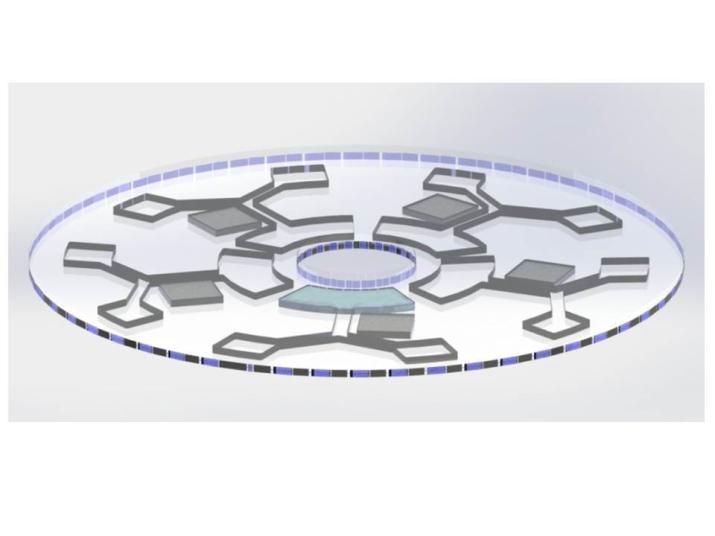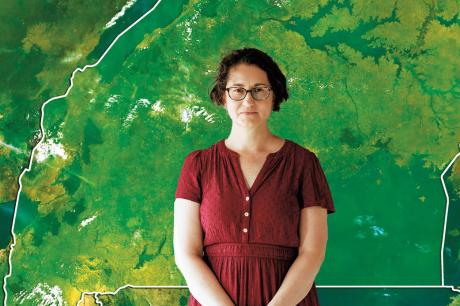
Side View of CD Design. Each CD is made of many layers brought together to make small, intricate channels for water to run through.
Published July 29, 2014, last updated on October 5, 2017 under Voices of DGHI
By Brittany Davis
Importance behind the CD Technology
The paper-based bacteria tests have the potential to influence large scale change in developing nations. One could test the water they plan to drink, cook with, wash their hands with, and share with his or her family.
These tests are powerful but they only accept less than 1/8th of a teaspoon. One of the biggest problems we are facing right now is how to catch all of the bacteria attached to magnetic particles in a very small volume of water. The CD technology is being developed to solve this. Once all of the bacteria are separated we can add them onto the paper-based bacteria tests to obtain a reliable, accurate result every time.
How the Disks Work
The design of our first disk can be seen in the top image. Numerically following the image to the right, this figure illustrates the steps we plan to use to collect all of the bacteria and magnetic beads:
- Add Bacteria-Magnetic Particle solution in Loading Chamber near central hole of CD

- Spin Disk: Counter Clockwise Direction
- Because of the Centrifugal force and Coriolis force, waste fluid will flow from the top loading chamber into left collection chamber
- Magnetic Particles will stick to chamber walls close to the magnet (grey square)
- Remove the magnet
- Insert Fluid into Loading Chamber
- Spin Disk: Clockwise Direction (opposite direction)
- Sweep magnetic particles and bacteria to the right collection chamber in a small volume suitable for the paper-based bacteria tests
- Because the magnetic force is not longer there, bacteria and magnetic beads will follow the water movement into the right container
Once refined, this technology will hopefully allow us to collect all of the bacteria in a little less than ½ a cup (100 mL) and gain a reliable, accurate test result on the paper-based bacteria test strips.


